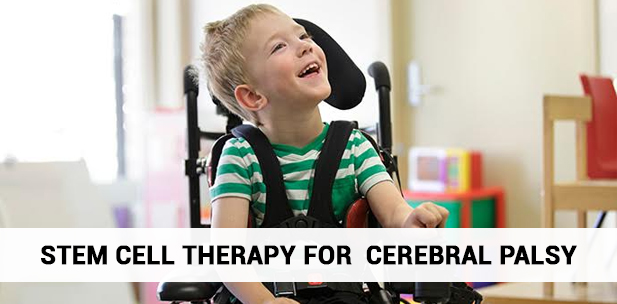Cerebral palsy (CP) is an umbrella term used to identify a variety of movement and posture-related disorders. ‘Cerebral’ means brain and ‘palsy’ means weakness or lack of control of the muscle. While cerebral palsy is a permanent condition, a child with this condition can accomplish better control over his or her movement by learning and practising motor skills. Stem cell therapy for cerebral palsy, which is a progressive and highly innovative procedure can aid the child to improve movement and live a normal life.
Cerebral palsy – causes and effects
Cerebral palsy affects people in various ways – some people have minor problems with motor skills, while others may be completely physically dependent. CP obscures brain messages to cause increased muscle tension (known as hypertonus) or reduced muscle tension (known as hypotonus). The stress often fluctuates and becomes more or less evident. Messages from the brain can also be mistimed, wrongly sent to the wrong muscle or not sent at all. This affects timing, quality and message synchronization, resulting in unpredictable muscle movement. Only the brain-muscle communication connection is affected, not the muscles themselves. Sometimes there are other disabilities with cerebral paralysis – hearing, sight, or speech disorders, epilepsy, or intellectual disability. However, these disabilities do not necessarily manifest themselves in all cases of CP.
CP is the result of changes in or trauma to the brain that develops before or during birth, or at times during early childhood. This is not a hereditary disease, not it is contagious, it is just a medical condition that can be managed. It is usually the result of insufficient blood supply and lack of oxygen in brain areas, resulting in brain cell damage. Recent research suggests that babies who are extremely premature may also be at risk. The prevalence of CP is relatively higher in cases of multiple births.
Here are some of the symptoms that indicate the child may have cerebral palsy:
- Early feeding problems
- Delayed development
- Poor muscle control
- Muscle spasms
- Lack of coordination
Although the brain damage will not worsen, the age-related effect on the body may become more evident and physical deformities may develop. Timely diagnosis and treatment will play a vital role in reducing the gravity of the effects of the disability.
Cerebral palsy can affect the mobility of a person, their ability to speak, or their appearance on the outside. Like most people, however, someone with cerebral palsy also has life skills and goals that are much the same as those of everyone else.
Stem cell therapy for cerebral palsy
Stem cell therapy for cerebral palsy is a relatively newer and highly innovative treatment protocol that involves the use of the body’s own stem cell to treat the condition. Stem cell therapy is known as the science of regeneration, and because of it being comparatively new it is not accepted globally as a standard procedure for treating cerebral palsy. However, with the passing years, this is proving to be highly result-oriented and beneficial to all patients who have undergone this procedure.
During this procedure, the stem cell expert doctor injects stem cells into the child intravenously i.e. through a vein. The aim is to promote the production of stem cell into nerve cells that will connect with the other cells of the body. In addition, once the cells interact with other cells, they must be able to deliver signals to the muscles controlling movement. This improvement is critical to the success of the procedure.
After Stem cell therapy for cerebral palsy, physical therapy is almost always recommended. Stem cell therapy is often combined with procedures like Hyperbaric oxygen therapy (HBOT), Ozone therapy and holistic neuro-rehabilitation. Stem cell therapy combined with either HBOT or ozone therapy along with neuro-rehabilitation provides the child with the highest chance of success.
As Stem cell therapy for cerebral palsy is a fairly new treatment option available for CP there is relatively lesser data available. However, it is extremely crucial that one choose the right hospital and stem cell expert who can ensure appropriate treatment. Different hospitals and doctors across the globe have different success rates which makes it even more vital to choose the most accurate facility.
FAQ
What is the current status of Stem cell therapy from the regulatory framework?
The stem cell-based therapy is in the research phase and not yet formally approved by ICMR. However, the application of stem cells, popularly known as bone marrow transplants, in blood-related disorders is approved by ICMR.




